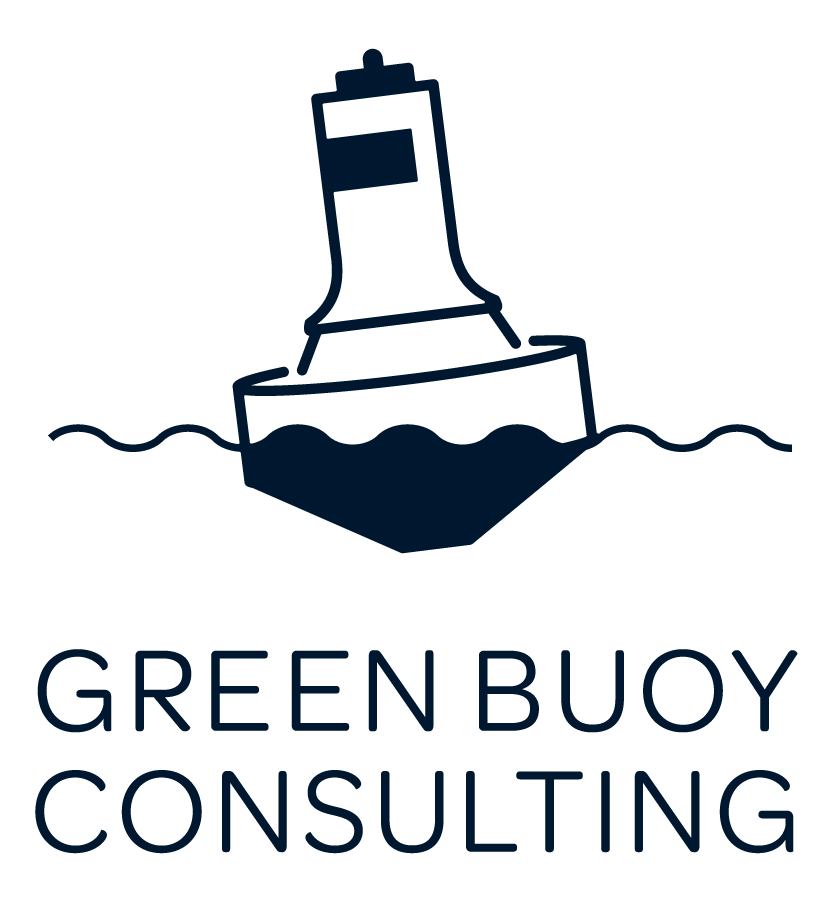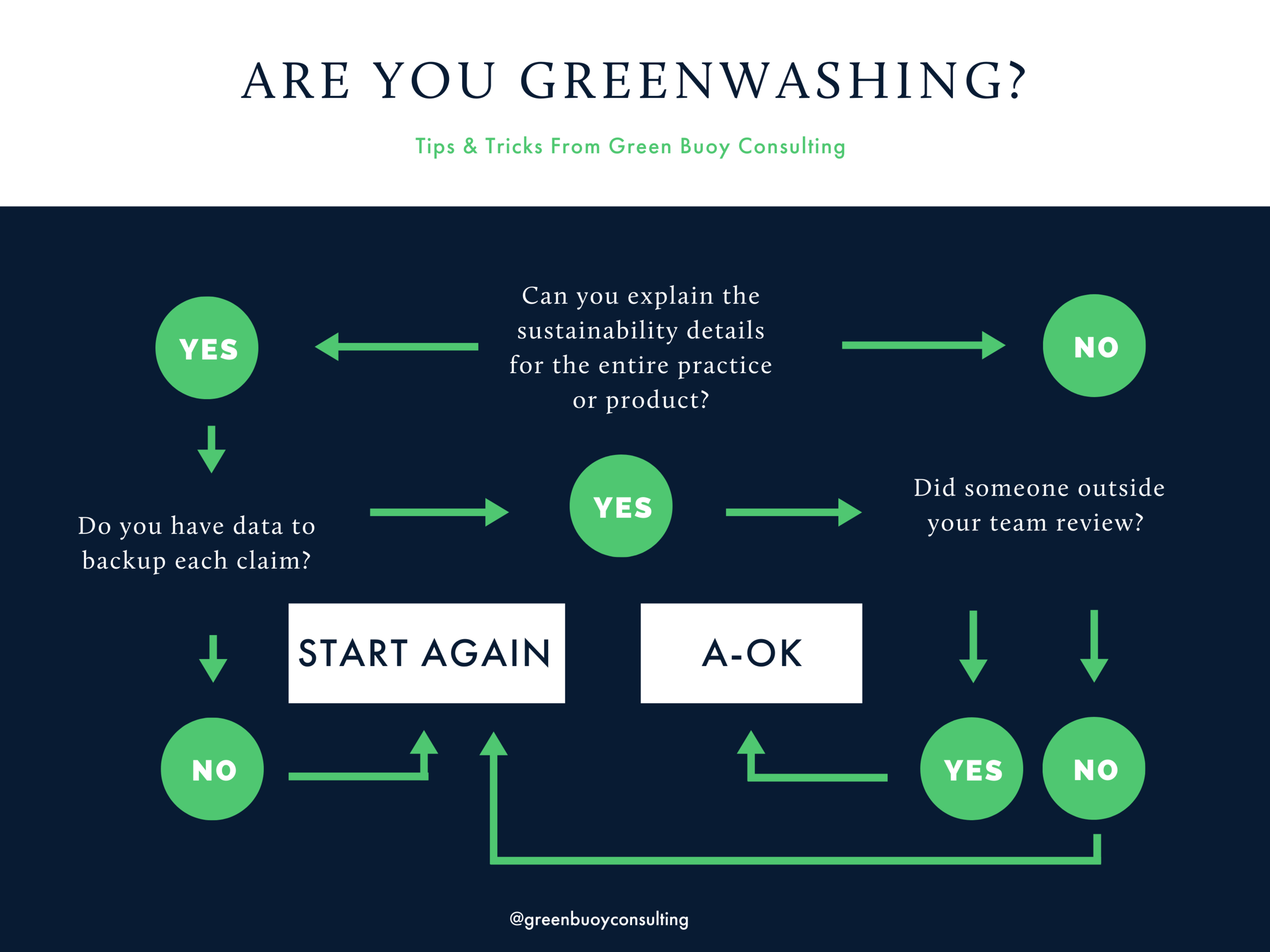Steal These Tips to Avoid Greenwashing
For smart consumers and business owners, greenwashing has become a part of the sustainability lexicon. We’ve all seen the “all-natural” label on chicken made in a factory farm. Or the “pure” labels on chemical cleaning products. What about “green” listed as the only descriptor alongside furniture or other products? These are all examples of greenwashing.
According to Investopedia, “Greenwashing is the process of conveying a false impression or providing misleading information about how a company's products are more environmentally sound. Greenwashing is considered an unsubstantiated claim to deceive consumers into believing that a company's products are environmentally friendly.” The term was created by environmentalist Jay Westerveld in 1986.
Greenwashing can apply to products or a company’s perceived environmental impact. If you’re trying to bolster your own company’s environmental visibility or impact, it’s important to understand and find ways to avoid greenwashing.
Customers and stakeholders are becoming savvier as news of greenwashing becomes prevalent in news articles and the media. Consumers are seeing examples of greenwashing by companies and reading about the problem in the news. This double-dose of information means businesses must be vigilant and aware of how to avoid greenwashing.
Shortly after the BP oil spill in 2010, a photo circulated showing an internal sign at BP that said: “We Drink Fair Trade Coffee.” I’m not sure if this was real, but it is a pitch-perfect example of greenwashing, real or imagined. Trying to cover a significant environmental issue by touting a fairly small contribution is how greenwashing was originally conceived. Even without being responsible for the largest oil spill in history, BP bragging about Fair Trade coffee seems misguided at best.
Read on to learn how to identify greenwashing and how to avoid doing it as a business owner. Greenwashing can injure your brand and steal focus from worthwhile sustainability work. Always err on the side of caution and use these pointers to make sure you're following best practices.
BSR and Futerra teamed up to publish advice on preventing and recognizing greenwashing. It’s worth a read! They categorize greenwashing into “misguided” “greenwash noise” and “unsubstantiated.”
A “misguided greenwash” is a need for a different communication strategy. A “misguided greenwash” has significant environmental benefits to share, but is communicating them incorrectly. “Greenwash noise,” is someone who just wants to join the sustainability party and is adding to the story to the detriment of both their environment and company. “Unsubstantiated” is dangerous because it is often a story that includes a lie or lacks evidence. And while this doesn’t harm the environment, it could harm your brand.
These types of greenwashing are good to be aware of. For multiple cases of greenwashing, usually, a brand is trying to boost it's credibility, compete within its industry or get credit without doing any work.
Related: Understanding and Preventing Greenwash: A Business Guide
Ways to Avoid Greenwashing
Understand The Entire Practice or Product
Can you explain from start to finish why whatever you’re doing is sustainable, the sources you used to confirm that fact, how you’ve checked that fact and what you’re relying on to confirm whatever you’re sharing? You need to understand how it fits into your business as a whole, and the entire practice you’re sharing
Fit it into your business
Understanding your entire practice or product also means its relevance and place in your business. Remember BP, above? If you’re sharing how you’ve added hand dryers to the bathroom but haven’t checked your supply chain, it might be time for some more work.
It doesn’t mean you can’t share the hand dryers or other small things, but think about it as part of your whole business and be sure to frame this change as a starting point. The time to share hand dryers isn't when a negative article has come out about your supply chain.
Check the whole process
If you’ve checked the practice relative to your business, make sure you have an understanding of the entire practice. For example, if you’re discussing reducing waste or sharing a waste diversion rate, how is that being calculated? Are you using terms like zero waste when it’s 12% waste? Go through the process for determining how to reduce waste, what third parties you rely on to gather that information and if you’re counting by weight, kilograms, or dollar amount.
You do not need to share every detail of how you calculated things with your audience, but you should have them if they ask and you should have the details for yourself.
Share Metrics and Specific Information
While you do not have to share your process, you should share concrete data and numbers that you’ve completed. Putting numbers alongside pledges or sharing data to back up information helps clarify to stakeholders any progress.
Related: How to Share Sustainability Without a Sustainability Report
These graphics are a great way to share this example. A customer should always be able to get more information or details about anything that you share.
You can see the difference in data shared between the two examples. The first has the year of accomplishments, percentages of reduction and comparisons for data. The second image is mostly buzzwords without much to back it up.
Sharing metrics is also a good way to check if this is worthy of sharing. If your company spent $2000 on renewable energy this year, but spending $2500 promoting this practice, it's time to rethink. Again, like above, categorize it into the scope of your business. Attaching significant money to a problem or sustainability initiative is worth sharing. But the cost of the share should not equal the cost of the initiative.
Verify With a Third-party or Internal Review Process
As with most projects or big changes, it helps to have an additional level of review. Being forced to talk about how you got to the conclusion you did, the savings you found and the process will reinforce its accuracy.
If possible, verify with an external third party or with an internal group that wasn’t involved in the original process. Get someone to ask questions as the consumer and to review the information sources. Validating the metrics and copy is a must to avoid greenwashing. Review with your board or executive leadership team.
Related: How B-Corp Certification Benefits Your Business
You do not have to have specialty sustainability certifications to avoid greenwashing! An internal review process is a great way to confirm viability. Use tools and resources available to help internal decision-makers understand greenwashing and how to avoid it.
When in doubt, wait and review
There’s no harm in waiting. If you’re not sure if it meets a standard of greenwashing, don’t use it! You can wait for more information, more concrete data or more time so that you have a comparison to use.
For example, if you’re making a big push to reduce energy, it’s ok to wait until you have enough data to compare against yourself. 12 or 18 months of data is enough to build a graph to show improvements and share data.
Use Examples and Resources
Another resource to use is the Federal Trade Commission’s Guide for Green Marketing. Before adding “recycled” or “non-toxic” claims to products, review with both a lawyer and this guide. There are lots of resources explaining greenwashing, ways to combat greenwashing and other tools and tricks.
Getting more familiar with examples of greenwashing will help you avoid the practice. Google “greenwashing examples,” to see hundreds of bad actors and articles describing the practice. The more you know, the more you can avoid it!
And, As Always Look to Patagonia
As described in an article about greenwashing in Business News Daily, even Patagonia is honest about their lack of environmental perfection. Patagonia makes almost every “best of” or “leaders” list when it comes to sustainability and corporate responsibility. Yet their mission statement says, “We can't pose Patagonia as the model of a responsible company.” If Patagonia isn’t trying to sugarcoat their impact, you shouldn’t either.
Sharing less or sharing less than stellar data records is always a better solution than trying to spin or greenwash data. There is no shortage of greenwashing examples and resources available, so use them!
What questions do you have about greenwashing? Share in the comments, below.




















